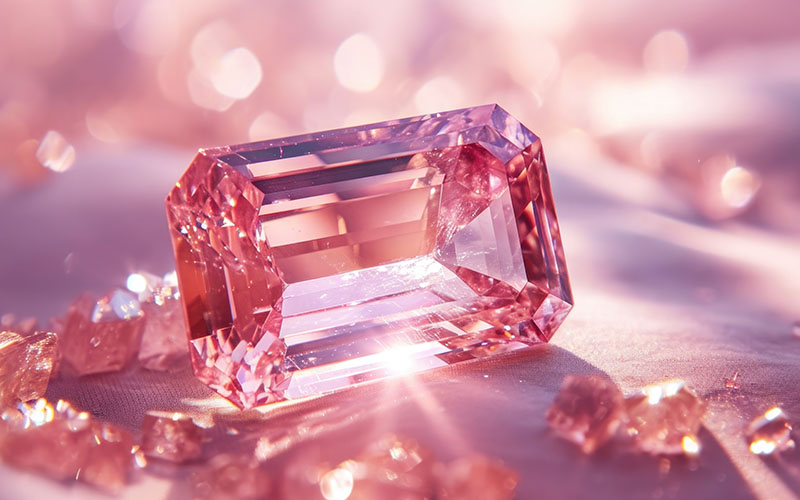Color is what sells a colored stone. It is the “special” quality that catches the eye, frequently before the stone is even cut.
Gemstones and fancy-colored-diamonds appear in all the colors of the rainbow, at different shades, with different intensities. Since the human eye can distinguish around 13 million shades and nuances of color, gemologists have developed a consistent method of mapping a gemstone’s proper position in the broad ‘Color Universe.’
There are three fundamental components:
1. Hue
The first step in mapping the color of a gemstone is establishing it’s basic color or Hue. This may be a pure, primary color (red, yellow or blue) or it may be a secondary color between the primaries. The color wheel below is an abstract illustration showing the relationships between primary and secondary colors.
The seven most basic hues are Red, Orange, Yellow, Green, Blue, Violet, and Purple.

20 additional descriptors are used for gemstones which present with a combination of the basic hues: Orangish-Red, Reddish-Orange, Yellowish-Orange, Yellow-Orange, Orange-Yellow, Orangish-Yellow, Greenish-Yellow, Green-Yellow, Yellow-Green, Yellowish-Green, Bluish-Green, Blue-Green, Green-Blue, Greenish-Blue, Violetish-Blue, Bluish-Violet, Reddish-Purple, Red-Purple, Purple-Red, Purplish-Red. In these combinations the last word is considered the dominant hue.
2. Tone
Tone is the lightness or darkness of color present. Along with saturation, it will be considered to arrive at a proper modifier for the gemstone’s hue.

It’s desirable to have tone which is not so far toward black that the hue becomes too dark to read, or so far toward white that any hue is hard to detect. With that said, darkness can visually benefit certain hues while lightness can visually benefit others.
3. Saturation
Saturation refers to the degree of strength, purity or intensity of the color present.

The hue of colored stones and fancy colored diamonds will be described using one of nine descriptors: Faint, Very-Light, Light, Fancy-Light, Fancy, Fancy-Dark, Fancy-Deep, Fancy-Intense or Fancy-Vivid.

Hue, Tone and Saturation
This is how the combination of these three key components are used to map a gemstone’s position in the 3D Color Universe.

Examples with photos
If you’d like to see this methodology in-action you can click to this page for 12 examples of colored-gemstone grading reports with descriptions and photos.



